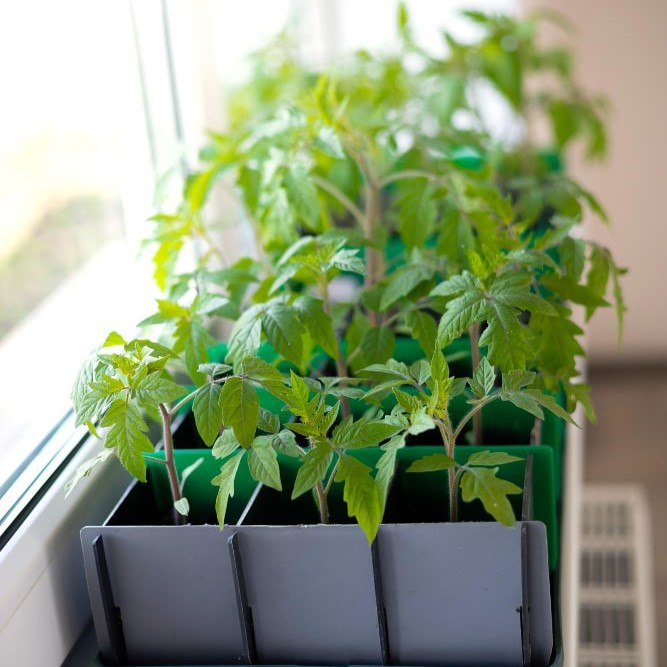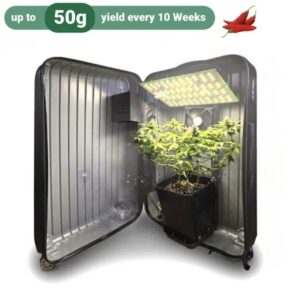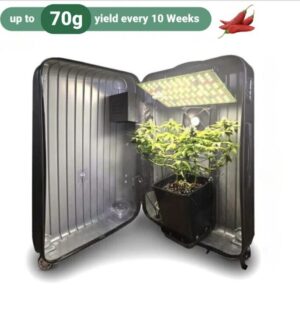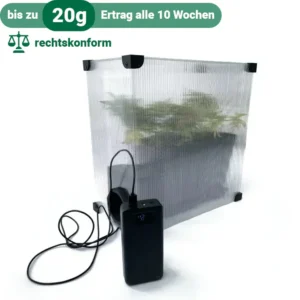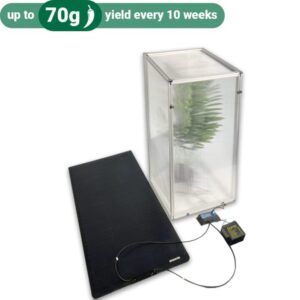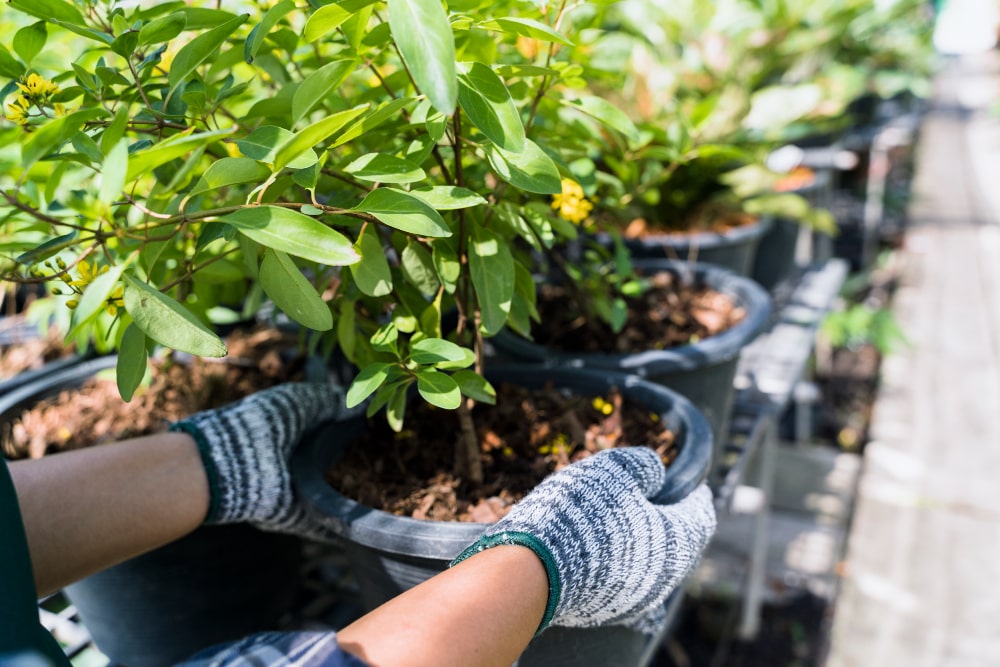Most growers prefer indoor cultivation due to its high-quality results. However, if you have a large balcony or garden, you might be wondering which growing method is best for you. In this article, we’ll break down the pros and cons of each method, focusing on the debate between indoor vs. outdoor growing. This will help you decide where you’d prefer to grow your plants.
Table of Contents
Indoor Growing
Advantages of Indoor Growing
Many growers choose indoor cultivation due to its numerous advantages. The biggest benefit is the ability to create a controlled growing environment. With indoor growing, you can precisely manage temperature, humidity, ventilation, and lighting, allowing you to establish the perfect conditions for your plants to thrive. This is especially important if you live in cooler regions like Germany, as indoor growing frees you from external factors like soil, climate, and weather. As a result, you can cultivate nearly any plant variety without worrying about regional environmental conditions. Unlike outdoor growing, you are not limited by the seasons and can grow year-round.
Additionally, with the ongoing discussions about cannabis legalization in many countries, including Germany, discretion is important for many growers. When you grow in the privacy of your own home, your plants are generally shielded from the eyes of others, ensuring that your neighbors remain unaware of your cultivation.
Indoor plants are also protected from pests and adverse weather conditions. Factors like rain, heat, and snow, which can harm your plants, do not affect indoor growth. The risk of pest infestations is also lower indoors, allowing your plants to grow healthily.
Another advantage of indoor growing is the potential for a bountiful harvest. Since you can influence the environment of your plants indoors, you promote healthy growth and can expect a better and higher-quality yield.
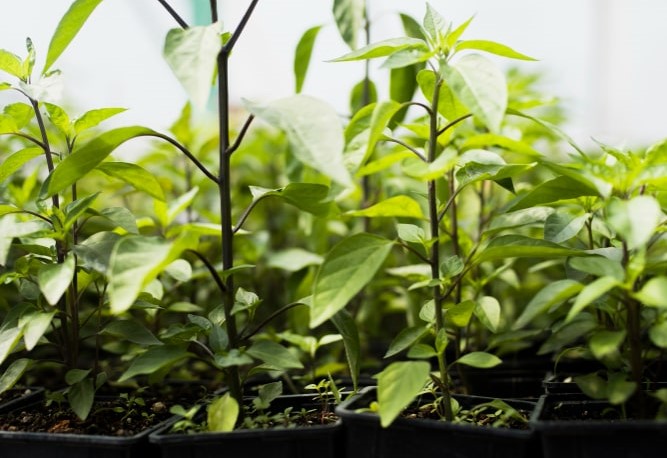
Challenges of Indoor Growing
While indoor growing has many advantages and is popular among most growers, it also presents several challenges.
To control the growing environment, you need the right equipment. Devices like fans, activated carbon filters, and grow lights are essential for indoor cultivation, which naturally incurs costs. Additionally, the operation of these devices leads to higher energy bills, meaning you should budget for both the initial investment in your grow equipment and ongoing energy expenses.
Another challenge is space limitations when growing indoors. If you’re cultivating in your own home, you likely have limited space, meaning you need to maximize the area available for your plants.
It’s also crucial to manage the odor of your plants during indoor cultivation. Growing in a pot at home can make this difficult, but using a grow box combined with an activated carbon filter and ventilation system can help minimize odors.
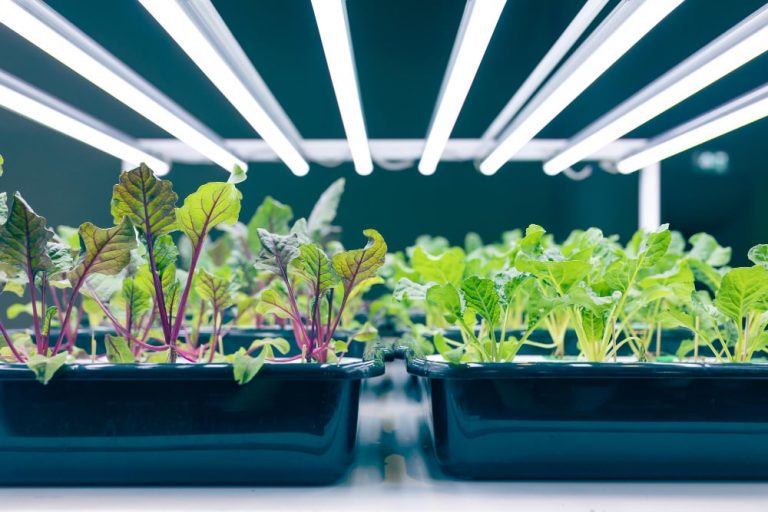
Bonsanto Indoor Grow Boxes
If you’re looking to grow indoors, there are various options available. You can opt to grow in your apartment or on your windowsill. However, like most growing experts, we recommend using a grow box, as it allows you to control the growing environment most effectively while overcoming many of the challenges mentioned above.
In our Bonsanto shop, you’ll find a selection of indoor grow boxes. If you prefer a discreet design that blends seamlessly into your living space and is easy to move, our mini grow boxes are ideal for you! Available in three different sizes and sold as complete sets, these boxes include essential growing components. Additionally, you can equip Bonsanto grow boxes with reflective foil to ensure your plants receive ample light and optimize growth.
If you have a bit more space in your home and want to grow more plants at once, our grow tents are an excellent option. These are robust and also available as complete sets.
-
40x40x160cm / 40x40x120cm – Mini Grow Tent – PanBu Test Winner! NEW IN STOCK
Rated 4.40 out of 5$225.00 – $289.00Price range: $225.00 through $289.00 incl. VAT Select options This product has multiple variants. The options may be chosen on the product page -
Bonsanto® Mini-Grow-Box Case L
Rated 4.67 out of 5$305.00 – $410.00Price range: $305.00 through $410.00 incl. VAT Select options This product has multiple variants. The options may be chosen on the product page -
Bonsanto® Mini grow box case XL
Rated 4.73 out of 5$329.00 incl. VAT Add to basket
Outdoor Growing
Advantages of Outdoor Growing
When comparing indoor and outdoor growing, the latter has its own set of advantages.
Firstly, outdoor growing generally incurs lower costs, as you don’t need extensive equipment. Rainwater and sunlight are free, resulting in minimal initial expenses and virtually no energy costs.
Secondly, plants grown outdoors have more space. They typically grow larger, leading to a more abundant harvest. With ample room for their roots to expand, your plants can develop strong stems. The natural soil outdoors contains essential nutrients for your plants, often allowing you to forgo additional fertilization.
Growers who prefer outdoor cultivation often report a better smoking experience and more aromatic flavors from flowers grown outside. This is attributed to the natural growing environment.
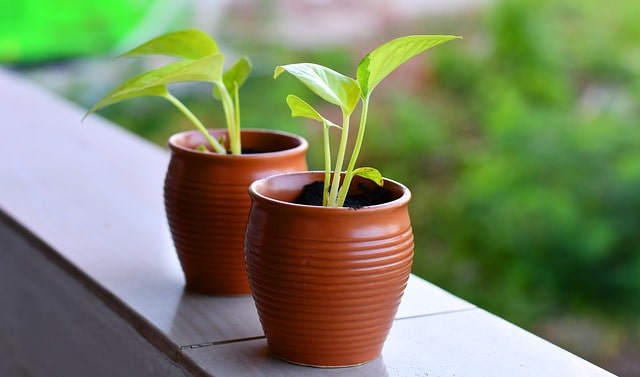
Challenges of Outdoor Growing
Growing outdoors exposes your plants to various weather conditions and temperatures, which are beyond your control and can harm plant growth.
Additionally, diseases and pest infestations are challenges that outdoor growers must manage. The risk of pest infestations is higher outdoors, so you should regularly check your plants for signs of pests. Outdoor plants are also more susceptible to diseases caused by fungi or bacteria, making good ventilation and appropriate spacing between plants essential.
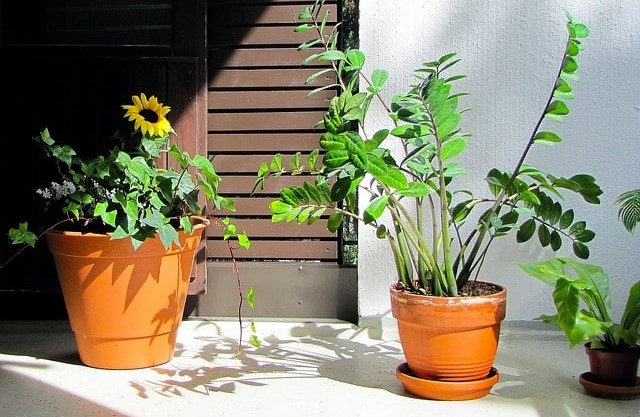
Bonsanto Outdoor Grow Boxes
If you want to grow outdoors on your balcony while keeping your plants shielded from prying eyes, check out our Bonsanto outdoor grow boxes. Designed specifically for outdoor cultivation, these boxes feature frosted glass, making your plants invisible from outside. They are also UV and frost-resistant, protecting your plants from certain weather conditions. To prevent odors and ensure good ventilation, the grow box comes with a fan and an activated carbon filter. You can also use the Bonsanto Mini Grow Box XS for your outdoor growing needs if you require less space.
-
Bonsanto® Mini-Grow-Box XS
$199.00Original price was: $199.00.$169.00Current price is: $169.00. incl. VAT Add to basket -
Greenhouse by Bonsanto® (Ideal for Automatic Plants)
$196.00 – $269.00Price range: $196.00 through $269.00 incl. VAT Select options This product has multiple variants. The options may be chosen on the product page
Can You Grow Outdoors with the Bonsanto Case?
If you own a Bonsanto grow case and want to grow outdoors, that’s also possible. Use autoflower seeds for outdoor cultivation in the case and keep the lighting on for 24 hours a day. By keeping the case closed, the continuous lighting will generate enough heat for your plants to thrive even during winter.
-
Bonsanto® Mini-Grow-Box Case L
Rated 4.67 out of 5$305.00 – $410.00Price range: $305.00 through $410.00 incl. VAT Select options This product has multiple variants. The options may be chosen on the product page -
Bonsanto® Mini-Grow-Box Case M
Rated 4.82 out of 5$187.20 – $328.00Price range: $187.20 through $328.00 incl. VAT Select options This product has multiple variants. The options may be chosen on the product page -
Bonsanto® Mini grow box case XL
Rated 4.73 out of 5$329.00 incl. VAT Add to basket
Indoor vs. Outdoor Growing: Which is Better?
Both indoor and outdoor growing have their advantages and disadvantages. The best growing location for you depends primarily on your individual needs, circumstances, and preferences. Regardless of which location you choose, you can achieve successful growth in both settings.
As you’ve seen, indoor growing presents certain challenges, but many have simple solutions. It’s true that you’ll likely face higher costs with indoor growing, but you can keep operating expenses low by using LED grow lights instead of traditional lighting. Furthermore, timers can be used to control ventilation, lighting, and watering, ensuring that they operate only when necessary. If you face space limitations, consider employing the ScrOG method, allowing you to achieve a good yield despite limited space. Additionally, most activated carbon filters and ventilation systems are effective at completely neutralizing cannabis odors, preventing any smells from escaping your grow box into your home. If you’re in the market for a good activated carbon filter, check out our Silent or Max activated carbon filters.
Whether indoors or outdoors, we generally recommend using a grow box, as it can help you avoid many of the challenges associated with both indoor and outdoor growing.
Overview: Indoor vs. Outdoor Growing
- Indoor and outdoor growing both have their pros and cons.
- Both growing locations present challenges.
- Indoor growing delivers high quality; outdoor growing is more cost-effective.
- Outdoor plants thrive in a natural growing environment and tend to be larger.
- Indoor plants can be grown year-round, minimizing the risk of diseases.
- The best growing location depends on your preferences.
- We recommend using a grow box for both indoor and outdoor cultivation.
